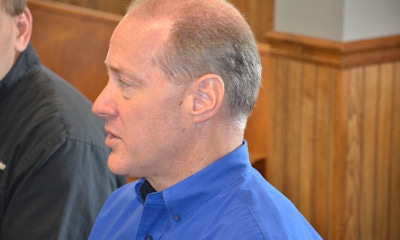
When an infectious disease strikes big –time, it requires a big-time response. The Indiana Board of Animal Health studies what happened in 2015 in Iowa and Minnesota when avian flu hit hard in laying houses. The lessons they learned came in handy when a different strain of the virus struck in a turkey flock in southwest Indiana.
“We prepared these lessons to help us get prepared in case Indiana ever faced this problem,” says Denise Derrer, director of communications for BOAH. “Little did we know we would be implementing what we had learned so quickly.”

BE READY: Any livestock operation today should have a plan ready in case there is an outbreak of an infectious disease or other emergencies, says Brett Marsh, Indiana State Veterinarian.
A turkey flock in Dubois County was confirmed to have avian flu on January 15. 2016. However, it is H7N8 highly pathogenic virus, different than the strain that wreaked havoc in Iowa and Minnesota a year ago.
Since the Board of Animal Health was prepared, their reaction was swift.
Here are four lessons originally learned from the 2015 experiences, Derrer says. Some have been updated with more lessons learned in the past few weeks.
1. Don’t Wait
As soon as you suspect an unusual problem, call authorities, Derrer says. In the recent Indiana outbreak, the turkeys began dropping dead in a matter of hours. Workers took swift action and the producers contacted vets right away. “One practical reason is that today USDA only pays for live birds in indemnity payments to producers who lose birds,” Derrer says. “They don’t pay for birds that died before they arrived on the scene.”
2. Forget the fire truck!
Don’t wait for the fire department to arrive or the cavalry to ride in, Derrer explains tongue in cheek. Grab your fire extinguisher and go! “The point is that if there is a major outbreak, even USDA has such limited resources that public health officials can’t get to everywhere at once,” she says. “If there are more than five operations on the list ahead of you, you may need to start figuring out what you need to do on your own. That may include humanely euthanizing animals to contain the disease. “
3. Plan now just in case
“We were certainly better prepared to deal with this emergency now than we would have been 12 months ago,” Derrer says. “We watched and studied what happened last year- what went right and what could have been handled better. It helped us develop a plan.”
You also need a plan on your own operation, she emphasizes. Know how to recognize signs of possible trouble in your animals, and make sure everyone knows what to do if it happens.
4. It’s a new day at USDA
Derrer says changes in attitudes are much different than in the past. The policy is to still pay an indemnity for animals plus clean-up costs in these situations, but federal managers are asking more questions and looking more closely than at some points in the past. They aren’t writing blank checks, she says.
About the Author(s)
You May Also Like




